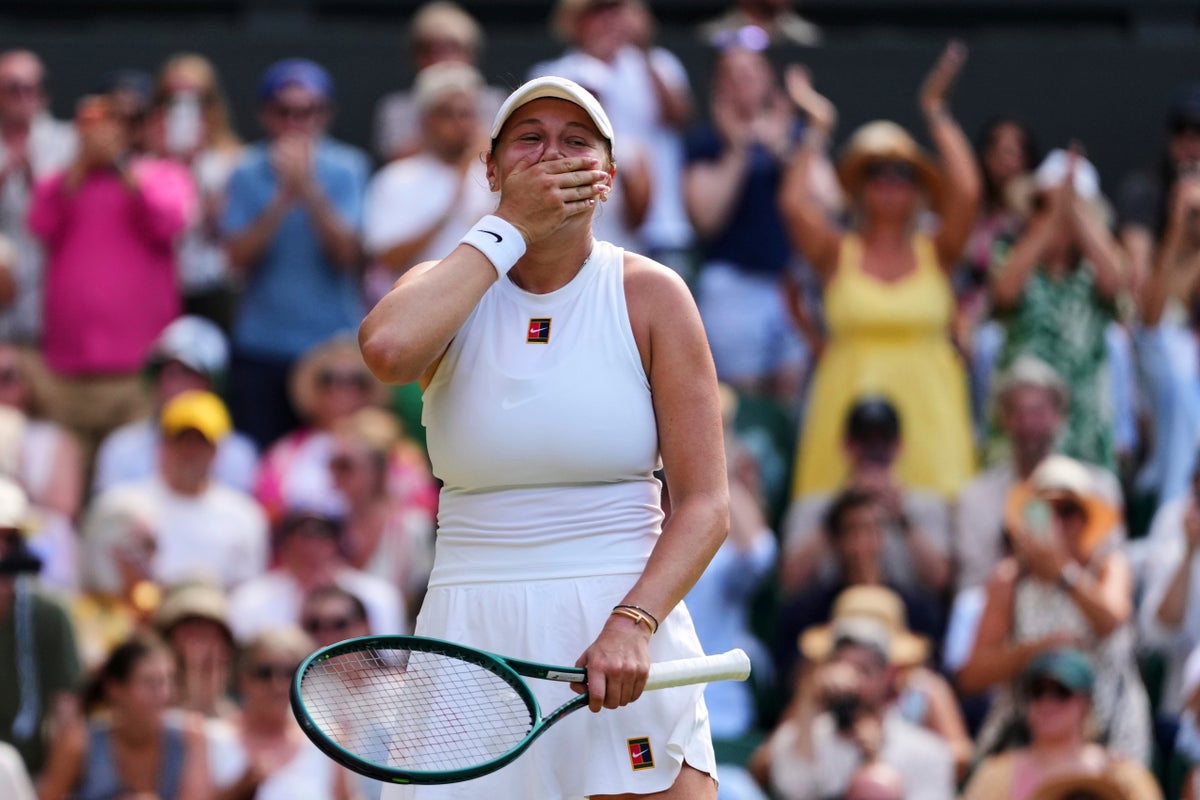The grass courts of Wimbledon, steeped in tradition and expectation, are set to host a semifinal encounter that pits raw, consistent dominance against a powerful resurgence. World No. 1 Aryna Sabalenka faces off against the revitalized American, Amanda Anisimova. While rankings might suggest a straightforward path for the top seed, their head-to-head history and vastly different paths to this stage promise a complex and intriguing battle.
Aryna Sabalenka: The World No. 1`s Relentless Pursuit
Aryna Sabalenka arrives at this semifinal having cemented her status as the game`s most consistent force over the past several seasons. Her ascent to World No. 1 is a testament to her relentless power and improved tactical acumen. This marks her fourth consecutive Grand Slam semifinal appearance and tenth in her last eleven major tournaments – a staggering record that underscores her reliability at the sport`s highest level.
Sabalenka possesses a formidable 12-1 record in major quarterfinals, a statistic placing her in elite company in the Open era. She has reached the final of the last three Grand Slams, lifting the trophy at the US Open but falling short in tough contests at the Australian and French Opens. Her victory in the quarterfinal against Laura Siegemund, a three-set grinder, highlighted a crucial aspect of her evolution: the ability to navigate adversity and prevent emotions from derailing her performance. As she herself noted, lessons learned from previous losses, particularly the French Open, are now being applied under pressure.
Wimbledon remains the only major final missing from Sabalenka`s impressive resume. Her drive to complete the set adds significant weight to this match, propelling her quest for a fourth Grand Slam title.
Amanda Anisimova: The Power of Comeback
Amanda Anisimova`s journey back to the Grand Slam semifinal stage is a narrative of resilience. Six years after her breakout run at Roland Garros as a teenager, she finds herself again on the precipice of a major final, this time on the hallowed grass. Her path hasn`t been linear; it included stepping away from the sport in May 2023, citing mental health struggles and burnout. Her candid admission and subsequent break were a necessary system reset in a high-pressure environment.
Since returning, Anisimova`s trajectory has been a “roller coaster,” as she aptly described it. Re-acclimatizing to the rigorous demands of professional tennis at the elite level required significant work, particularly on the physical side. Her initial attempt at Wimbledon last year saw her having to play the qualifying rounds, ultimately failing to reach the main draw – a stark contrast to her current standing. However, her form has steadily trended upwards since last summer. She captured the biggest title of her career at the WTA 1000 event in Qatar earlier this year and reached her first grass court final at Queen`s Club. This return to form is not just about technique; it`s fundamentally rooted in rediscovered confidence and finding joy in the sport again.
Anisimova`s quarterfinal victory secured her debut in the WTA Top 10 next week, a significant milestone validating her comeback. A win against Sabalenka would see her climb even higher, underscoring the effectiveness of her break and subsequent rebuilding process.
Head-to-Head: History Favors the Challenger (Slightly)
Despite the difference in their current rankings and recent major final pedigree, Anisimova holds a surprising 5-3 lead in their overall head-to-head series. Crucially, she won their first two encounters at Grand Slam events. While Sabalenka has gained the edge since Anisimova`s return, winning two of their three recent matches, their battles are notoriously intense. Both players described their previous meetings using the word “tough,” with Sabalenka anticipating “very aggressive tennis.”
Their most recent clash at Roland Garros last month saw Sabalenka emerge victorious, partly by strategically varying her rhythm against Anisimova`s potent, but sometimes predictable, power game. However, grass presents a different challenge. The lower bounce and faster surface could potentially amplify Anisimova`s flat, penetrating groundstrokes, which Sabalenka herself acknowledged suit her opponent`s game well. This tactical layer on a new surface adds another fascinating dimension to their rivalry.
The Stakes and What Lies Ahead
The winner of this compelling semifinal will advance to face either five-time major champion Iga Swiatek or the resurgent Belinda Bencic in the final. While a potential Sabalenka-Swiatek final would pit two of the game`s titans against each other in a major final for the first time (despite memorable clashes like the recent French Open semifinal), an Anisimova-Bencic final would represent a battle between two players who have overcome significant challenges and are seeking a maiden Grand Slam title. Regardless of the opponent, one certainty remains: Wimbledon will crown a new women`s singles champion this Saturday.
The Sabalenka-Anisimova semifinal is more than just a high-level tennis match; it`s a convergence of contrasting journeys – the sustained peak of a World No. 1 versus the triumphant return of a talent who prioritized her well-being. It promises powerful baseline exchanges, tactical adjustments on the fly, and the kind of unpredictable drama that makes Grand Slam tennis so captivating.

